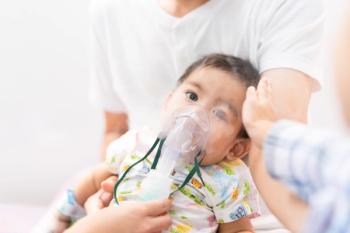
Medication or placebo to prevent migraine?
A trial comparing amitriptyline, topiramate, and placebo for prevention of migraine in children and adolescents with a history of migraine found that all 3 had about the same effect on reducing headache frequency or headache-related disability.
A trial comparing amitriptyline, topiramate, and placebo for prevention of migraine in children and adolescents with a history of migraine found that that all 3 had about the same effect on reducing headache frequency or headache-related disability. The active drugs were associated with higher rates of adverse events compared with placebo, however.
The 328 participants in the trial were drawn from 31 US sites. Ranging in age from 8 to 17 years, the youngsters had a diagnosis of migraine with or without aura or chronic migraine without continuous headache and had experienced headaches 4 or more days during a baseline period of 28 days. After this baseline period, investigators assigned participants to receive oral amitriptyline, topiramate, or placebo in a divided dose of 1 capsule twice daily.
The target dose was 1 mg per kilogram of body weight per day for amitriptyline and 2 mg per kilogram per day for topiramate. The dose was escalated every 2 weeks during a period of 8 weeks followed by a 16-week constant-dose phase of the highest dosage achieved. The 24-week treatment period was followed by a 2-week weaning period and a 4-week follow-up. Throughout the trial, participants completed a daily headache diary.
At the end of the trial, investigators tallied how many children in each group achieved a reduction of 50% or more in the number of days on which they had a headache during the final 28 days of treatment compared with the number of days on which they had a headache in the 28-day baseline period. Differences among the groups were insignificant: 52% in the amitriptyline group reached the 50% reduction goal compared with 55% of those in the topiramate group and 61% of those in the placebo group. Nor were any significant differences seen among groups in headache-related disability, the number of headache days, or the proportion of patients who completed the 24-week treatment period.
Patients who received amitriptyline or topiramate had higher rates of several adverse events than those receiving placebo. For the amitriptyline group, these adverse events included fatigue (30% vs 14% in the placebo group) and dry mouth (25% vs 12%, respectively) and, in the topiramate group, paresthesia (31% vs 8%) and weight loss (8% vs 0%) (Powers SW, et al. N Engl J Med. October 27, 2016. Epub ahead of print).
my take In this well-designed study, both medical interventions led to improved control of migraine, but neither medication performed better than placebo and both treatments led to more adverse events. Perhaps the structure of the study, with daily attention to the headaches and maintenance of the headache journal, was therapeutic. Or, it may be that the placebo effect alone offers relief to these children. -Michael G Burke, MD
Ms Freedman is a freelance medical editor and writer in New Jersey. Dr Burke, section editor for Journal Club, is chairman of the Department of Pediatrics at Saint Agnes Hospital, Baltimore, Maryland. The editors have nothing to disclose in regard to affiliations with or financial interests in any organizations that may have an interest in any part of this article.
Newsletter
Access practical, evidence-based guidance to support better care for our youngest patients. Join our email list for the latest clinical updates.










